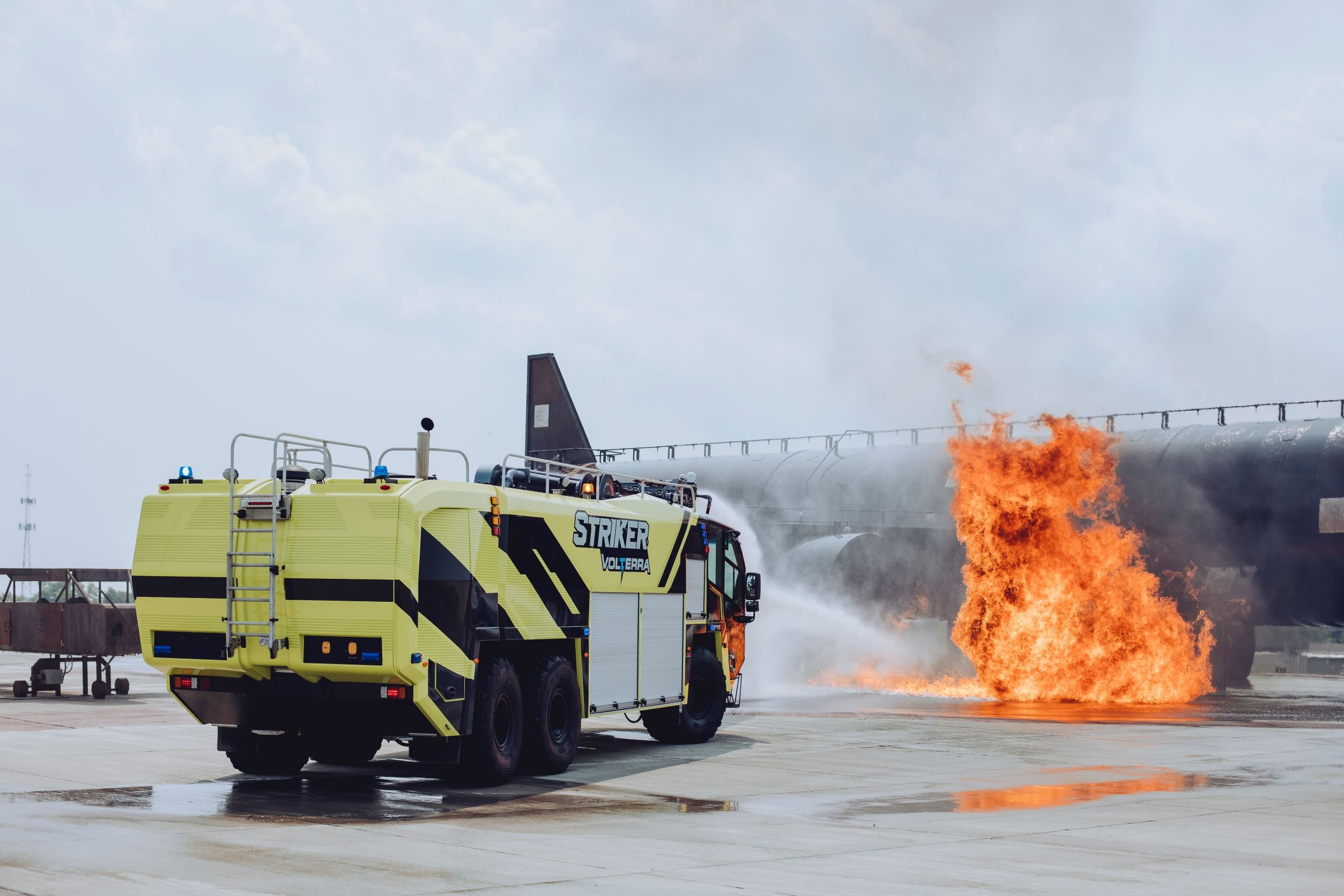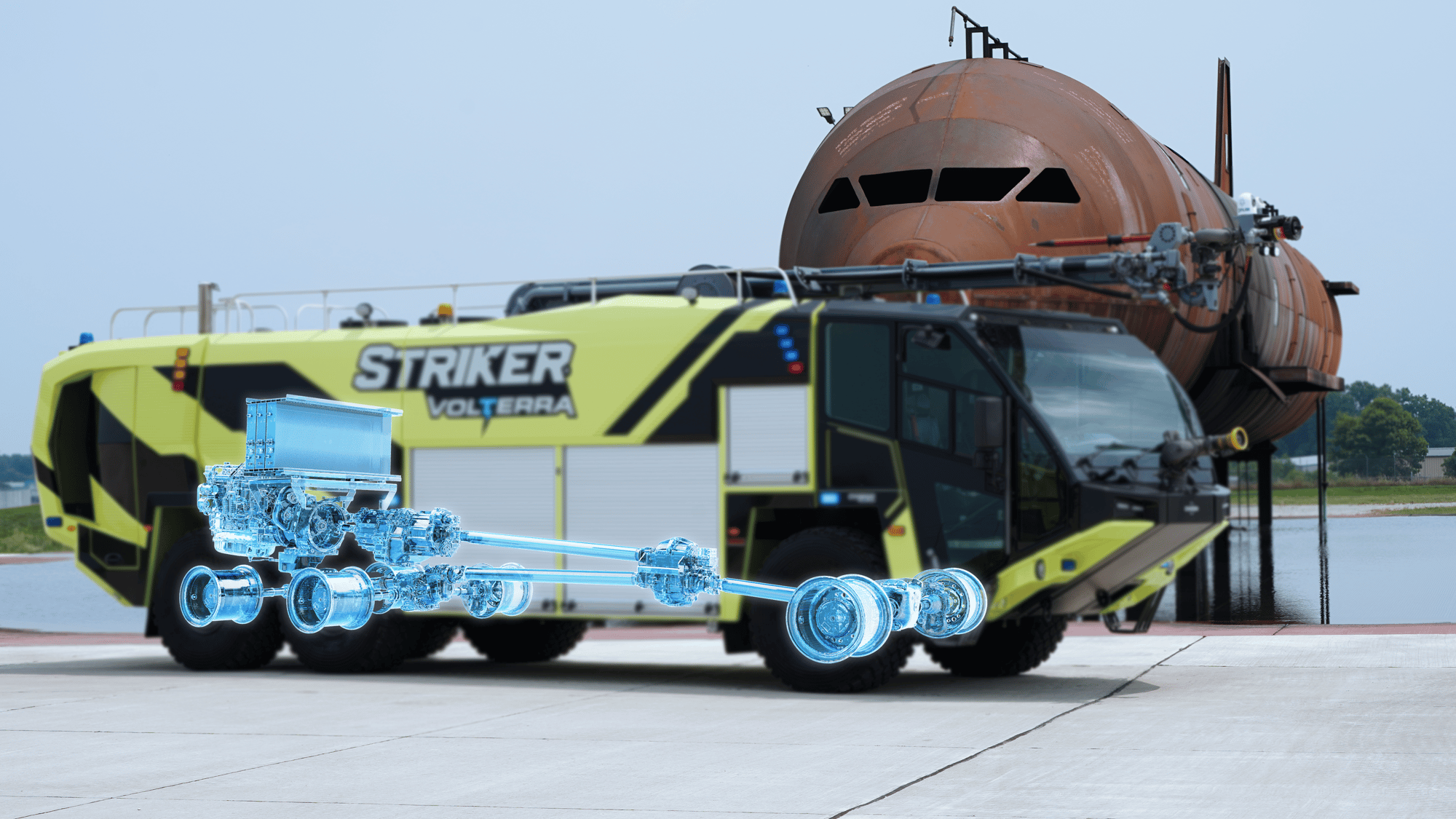
Welcome to Oshkosh Airport Products' series on the innovative features of the Striker Volterra Electric ARFF vehicle. In this installment, we explore the acceleration. As an industry leader in airport firefighting equipment, we are committed to providing you with accurate and relevant information on this advanced technology. Dive into the benefits of the Striker Volterra ARFF truck's acceleration below.

Acceleration is made possible by a drivetrain that utilizes power from an onboard battery as well as the vehicle's engine. This feature enables both the diesel engine and high-voltage (HV) battery to obtain maximum acceleration performance. When the response demands full acceleration performance, the combustion engine will automatically start.
Based on driver input, the combustion engine is automatically started and smoothly engaged. Power delivery is optimized between the HV battery and the combustion engine to maximize acceleration performance.
Acceleration is improved on the Striker Volterra ARFF platform. While a conventional Striker can accelerate from 0-50 mph in about 32 seconds, the fully loaded Striker Volterra ARFF in its heaviest configuration can obtain the same speed in under 25 seconds. The electrification is applied to fire apparatus in a way that enhances performance and reduces emissions through all-electric driving and a downsized engine. The differences that the electro-mechanical infinitely variable transmission (EMIVT) and Striker Volterra ARFF offer is to provide improved performance in the form of acceleration capability with a downsized engine. This allows the truck to meet extreme performance criteria like 50% gradeability, 70 mph top speed and uninterrupted full pumping performance with the standard 2,000 gpm and 250 PSI water pump.
The ARFF crew will require no additional training or familiarization to perform the mission. The UI (user interface) of the Striker Volterra ARFF is the same as that of the conventional Striker. An additional gauge is provided to allow the driver to maintain electric vehicle (EV) mode without starting the combustion engine, if desired. The driver also has an EV button that can be used to either start the engine from EV mode, or to re-attain EV mode for zero emissions entry to the fire station.
Regardless of the state of charge, the performance of the vehicle will not degrade based on Oshkosh testing. Enhanced acceleration performance of the Striker Volterra ARFF truck allows drivers to meet response times while allowing for safe maneuvering on the way to the site.
One of the crucial differentiators is our patented “Response Oriented” SOC (state of charge) management. There are two elements to this that set our solution apart:
Based on these two elements of our design, we have a solution that supports consistent ARFF response without the need for an over-size combustion engine, or a reduction in performance based on SOC of the HV battery.
Click the links below to explore our educational series on the Striker Volterra ARFF vehicles innovative features and advanced capabilities. Delve into various aspects of this industry-leading ARFF truck, including its low-emission technology, charging requirements, and emergency response adjustments. Learn how these state-of-the-art firefighting solutions are designed to protect passengers and cargo at airports around the world.
